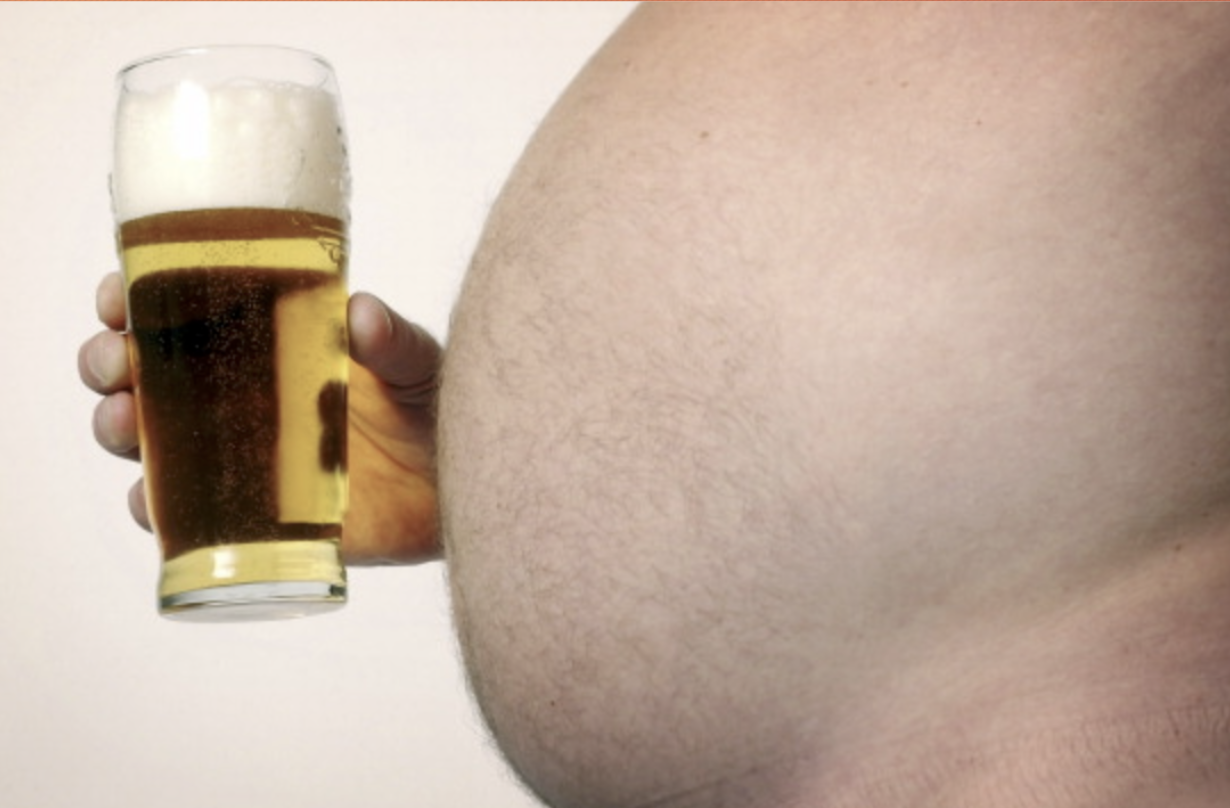Prevention of Pre-Diabetes
It’s always nice to see people in the medical community backing your beliefs. I found this quote recently by Dr. Michael Valentine, the President of American College of Cardiology (2018-2019) that said “While we are constantly finding innovative ways to treat existing heart disease, we must continue to focus our efforts on preventing heart disease. It will require efforts from more than just the medical community, but from communities and government as well.”
In this blog, we’ll be covering pre-diabetes, obesity and how to prevent both of these things from occurring in the first place. Many people have heard about diabetes, but what most people don’t know is how the sequence happens from pre-diabetes to full-on diabetes and the process that the body goes through during this time.
High blood pressure, diabetes, and obesity all go hand-in-hand.
When you have a meal that is rich in carbs, where do those carbs go? They are absorbed into the bloodstream and go knocking on the door of our working cells in our liver, muscles, and other arteries to tell them that blood sugar is available. The cells listen and use this to go about their routine and create the energy that we use daily. However, as blood sugar continues you to come around and tell us that blood sugar is available, not all doors open. Now, the pancreas already secretes insulin into our bodies, and when that blood sugar comes knocking, they say - “Knock louder, I can’t hear you.” The blood sugar or insulin must be louder and work harder to get through those doors, hence the creation of insulin becomes higher. Insulin continues to come back with more and more insulin in order to open those doors, but after it accumulates such high levels over and over, it eventually says, “What do you expect of me? I can’t keep up with these levels anymore” Hence insulin resistance starts its journey.
The main reason this occurs is when our bodies are not getting the proper treatment tactics - a healthy diet, exercise, and of course, too many carbohydrates. As we know, everything is okay in moderation, but when your body starts to become unresponsive, it’s because of unwanted belly fat and lack of care for our bodies. Our bodies try to help us maintain healthy weights, even from the inside, hence the resistance to insulin production trying to help keep us healthy and fit. For people that have diabetes and other health-related issues, this fight can be challenging. Your blood test will be where you see the difference in your body.
Your number should look something like this:
Pre-Diabetes: between 100-126
Diabetes: 126 or higher
1 out of 3 people in the United States test positive for pre-diabetes, and had no idea that they were even in a categorical place for pre-diabetes or diabetes in general. This is where we wrap everything back to our previous lessons: stay on top of your health and make your primary care physician your best friend. Get your checkups, monitor your own health at home, and do the things that you know are good for your bodies in the long run. Your physicians will tell you how to take care of your bodies before diabetes can kick in, or how to prevent your body from getting to a diabetic level.
To your health,
Dr. Anthony
The Tip of the Iceberg
Last week I was honored to present on the obesity-diabetes-and artery disease epidemic to a group of Delta employees in Atlanta. The venue was warm and inviting and very well organized. The participants were engaged and asked a large number of insightful questions. After my talk was over, I was invited to one of the working areas and I was happy to see that there were so many standing desks and a lot of opportunities for the employees to be physically active. A great workplace!
I used several PowerPoint slides for my presentation. One of those showed a picture of a gigantic iceberg where both the above-the-surface and below-the-surface parts of the iceberg were visible. The caption read: “Why am I showing you this picture?” After I let the question sink in the minds of the audience for a few seconds, I presented the next slide. There was the picture of a huge belly of a man. The face or the rest of the body were not shown; the focus was on the belly. The caption read: “Because it is so easy to see this…”. The next slide followed in quick succession and its caption picked up where the previous one left: “...but you can’t see that!”
Just like the iceberg that sunk the Titanic, what is hiding below the surface is the most dangerous. Our artery health can’t be seen from the outside, but inside, the story is much different.
You can clearly see the “deeper issue” in this up-close photo of an adult artery.
The “that” was the inside of an artery of a person with a huge belly like the one on the slide. The artery looked ugly, like a war zone. Instead of appearing like a smooth glistening tube, the inside of the artery was uneven, filled with dirty-looking red and yellow growths, like tumors. These tumors were not cancers; they were advanced-stage cholesterol plaques with bleeding and clots on their surface. Such an artery can become the cause of a heart attack, stroke or sudden death without further notice. The slide that followed showed exactly how such a thing can happen. Most of us (especially men) start developing thin fatty lines in the wall of our arteries when we are teenagers. These early fat accumulations are called “fatty streaks” and represent the only form of cholesterol accumulation in our arteries that is reversible. As the cholesterol plaques continue to develop, it usually takes them a minimum of 20 plus years to mature and, usually, cause zero symptoms during that phase. Once mature, they can, all of a sudden and without any further warning, become unstable, and within a minute they can be causing serious symptoms like chest pain, heart attack, stroke or even sudden death.
Unfortunately, in western countries like ours, by the time we are 45 years of age most of us (especially men) do have some cholesterol plaque in the walls of our arteries. As long as these plaques stay stable, they are not a health problem and usually cause no symptoms. Once unstable, the result is catastrophic. So, what do we need to do to keep any plaques stable:
No smoking (not even one or two cigarettes a day)
Keeping our blood pressure and LDL cholesterol low (our health care provider will advise us whether or not we need medications to achieve this)
Staying physically and socially active
Eating a healthy diet with an emphasis on avoiding abdominal obesity by excluding fast carbs
Avoiding alcohol abuse
Sleeping at least 7 hours per night
Avoiding excessive stress
So, take good care of your arteries in order to keep any possible cholesterol plaques at bay and enjoy a long life without heart attacks, strokes or the need for heart surgery or other heart procedures.
To your health,
Dr. Anthony
The Shocking 65 & Other "Sweet" Tales
Last week, while preparing for a presentation on wellness, I came along food labels for certain soft and energy drinks.
I must have read this type of information hundreds of times but it never stops shockingly amaze me to realize that they may contain up to 65 grams of sugar (or more) per 600 ml (20 oz)!
Now consider that the American Heart Association recommends no more than 25 grams of added sugar per day for women and no more than 37.5 gm of added sugars per day for men. So, if you just consumed 20 oz of a sugary beverage you’ve probably gulped in your added sugar allowance for an entire 2-day period!
And it is not just sugary beverages that contain a shocking amount of sugar, much more sugar that a health-conscious person could possibly afford. All of the so called “fast carbs” (high glycemic index carbohydrates) have lots of sugars that are quickly digested and absorbed from the stomach into the bloodstream. Fast carbs include not only sugary beverages, cookies, desserts, ice cream, baked goods and donuts but also added sugars found in low-fat yogurt and starches present in white bread, white pasta, white rice, white potatoes. If consumed daily or in large quantities, fast carbs are dangerous for our health because:
They have a great taste and texture that we cannot resist
Instead of keeping us full for several hours they promote hunger: the sugar-high leads to insulin-spike and then, 1.5-2 hours later, sugar-low, making us hungry and forcing us to eat again and again.
So, read the food labels and limit the amount of added sugar you have per day to no more than the equivalent of 6-9 teaspoons of table sugar. Avoid sugary beverages and be skeptical of “low-fat” yogurt. If you cannot entirely resist white bread, white pasta, white rice or white potatoes, consume them only in small amounts. If you are diabetic or obese, I highly recommend that you invest in a personal nutritionist. It will be one of the best investments you can make in your health journey!
To your health,
Dr. Anthony





